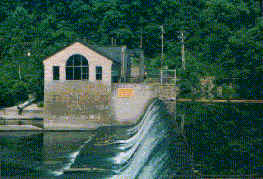State Acquisition Project Areas
Current State land acquisitions enhance and expand the following project areas across New Jersey.
For information about sites previously acquired to enhance and grow our State land programs, visit our State land acquisition sites archive
State Acquisition Project Areas
The Barnegat Bay is the most widely used recreational resource in New Jersey, yet its ecosystem is fragile and dependent on the preservation of coastal islands, wetlands, and critical uplands. Preservation of open lands and moderation of harmful uses of the Bay and along the rivers and streams that feed it, will allow the continued enjoyment of this critical natural and recreational resource by millions of residents and visitors each year.

Cape May is host to increasing numbers of tourists every year. This increase is due to the presence of Cape May Point State Park, Higbee Beach Wildlife Management Area, and the natural wonders that can be observed at these sites. Located on the Atlantic Flyway, both of these state facilities have drawn worldwide attention for the spectacle of the spring and fall migration of birds. Particularly notable are the spring migration of warblers and the fall migration of raptors. Tourists flocking to Cape May to witness these spectacles have also become a rite of the spring and fall migrations. Green Acres will continue its program of expanding Cape May Point State Park, Higbee Beach Wildlife Management Area, and other important wildlife areas to protect wildlife and provide public access on the Cape.

When competed this project will create a continuous greenway from the State Capitol in Trenton to the Atlantic coast across Central New Jersey. Lands will be acquired to connect an existing trail from Manasquan through Allaire State Park to the Manasquan River Reservoir – managed for recreational use by the Monmouth County Park System – in Howell Township, to Turkey Swamp County Park and the Turkey Swamp Wildlife Management Area in Freehold Township. As envisioned the greenway will continue west through the state’s Assunpink Wildlife Management Area in Millstone and Upper Freehold Townships, Monmouth County and Washington Township, Mercer County, to Mercer County Park in West Windsor Township, Mercer County, connecting to the state’s Delaware & Raritan Canal State Park which leads into the historic City of Trenton. Green Acres hopes to be able to offer hikers, cyclists, horseback riders, and nature enthusiasts this opportunity to experience central New Jersey’s gently rolling countryside through partnerships with local governments, conservation and community groups and local citizens.

More Revolutionary War battles took place in New Jersey than in any other state. Remarkably, many vestiges of the Revolutionary War era still remain – mines, mills, soldier’s footpaths, revolutionary leaders’ homes, encampment sites, battlegrounds, and barracks. Many of these sites are already preserved in public ownership; many more can still be preserved. What is even more remarkable though, is that much of the landscape over which Washington’s army crossed on route from battle to battle is still open land. The basis of this project is to preserve land -through a variety of methods and with a variety of partners – that will help interpret New Jersey’s role in the American Revolution.

The Delaware and Raritan Canal State Park is a designated national recreation trail. It serves as a link between rolling countryside of the Piedmont and Inner Coastal Plain geologic provinces and urban areas. The park, as it exists now, is a relatively narrow strip along its 70 mile length. Green Acres and its preservation partners would like to widen the park and provide greater protection to neighboring resources. One of the major project initiatives is connecting the Delaware and Raritan Canal Greenway into a system of existing and planned greenways within the region.
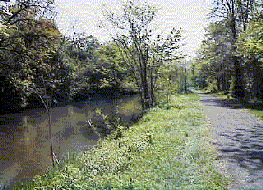
The Delaware Bayshore is an area of global ecological significance. Millions of shorebirds and thousands of raptors rely upon the area’s food sources and habitat for their survival during migration. The fragile web of marine and terrestrial species can only be sustained through preservation of contiguous blocks of habitat. In addition, this region’s economic base, once dependent upon harvesting of the bay’s natural resources, is greatly enhanced by a growing ecotourism industry that is directly linked to the preservation of the Bayshore’s natural resources. The primary focus of this project is the protection of the major river corridors that drain into the Delaware Bay.

Many consider the Delaware River Valley to be one of the most scenic areas of the Mid-Atlantic states. A trip down the 115 miles of river along New Jersey’s western border would reveal dramatic palisades at the Delaware Water Gap, the steep rise of the Kittatinny Mountains, forested islands, rolling valleys, towns, historic villages, and farms. The Delaware River also serves as a section of a major flyway for migratory birds. The amount of access varies throughout the length of the river, but remarkably, the vast majority of the New Jersey land along its length is only sparsely developed and retains its scenic quality. Efforts are underway to secure greater public access, broaden the width of public holdings within its corridor, and protect the scenic and historic resources of the Delaware River and its tributaries.
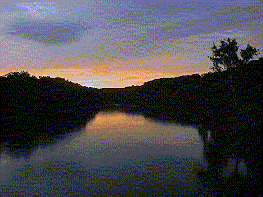
Green Acres will focus land acquisition efforts along the Great Bay, which straddles Atlantic and Ocean counties. These purchases will protect the scenic and natural resources of this coastal marsh and bay corridor as well as connect existing publicly owned lands. Much of Green Acres’ preservation effort will be in cooperation with the U.S. Fish and Wildlife Service, to expand and preserve the Forsythe National Wildlife Refuge.
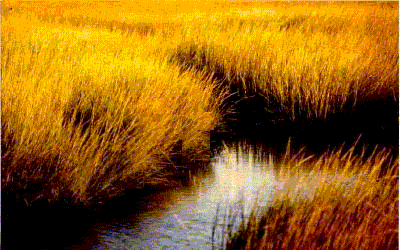
The Great Egg Harbor River, which has received national Wild and Scenic River designation, has been the focus of preservation efforts by Green Acres and Atlantic County for many years. Green Acres will continue to acquire land as part of its ongoing efforts to protect water quality in the river and its bay areas.
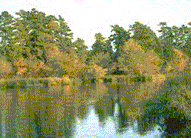
The New York/New Jersey Harbor Estuary Program is a unique regional partnership of federal, state, interstate, and local agencies, citizens and scientists working to protect and restore the natural resources of the estuary. Land along the Arthur Kill, Hudson River, Raritan Bay, and in the Hackensack Meadowlands is being considered for preservation. While Green Acres funds have previously been used in this region of the state, this specific dedication of funds will demonstrate New Jersey’s long-term commitment to this cooperative effort.
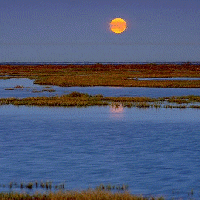
Sweeping across the north central portion of New Jersey, nearly one million acres of forests in the Highlands surround and protect the source waters for one-third of New Jersey’s citizens. Serving as a spectacular green belt around some of the nation’s most densely populated cities and suburbs, the majority of the Highlands’ mountains, ridges, forests, and fields are privately held and therefore are vulnerable to development. Preservation of the greenbelt is critical to ensuring the integrity of New Jersey’s water supplies and maintaining the state’s biodiversity.
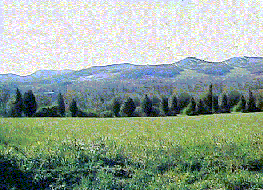
All across the state lie reminders of New Jersey’s exciting and important past: battlefields and barracks; Native American and early immigrant artifacts; factories and farms; mines, mills, and munition forges; canals and patriots’ footpaths; industrial barons’ mansions and humble poets’ homes; laboratories of invention and genius and relics of early industries; lighthouses that guided schooners to safe harbor and safe houses that harbored slaves on the path to freedom. Many resources of New Jersey’s past have been recognized, listed on the National Register of Historic Places and/or New Jersey Register of Historic Places and protected through public ownership or regulatory oversight. Many other historic sites still await discovery and proper recognition of their place in history; and all historic sites are in need of proper care and interpretation. By protecting and linking sites of historic significance and by preserving swaths of adjoining buffer lands, the history and even the historic landscapes of New Jersey can be preserved. With the foresight to preserve the past, the public will forever enjoy the scenic, cultural, recreational, and educational benefits of valuing New Jersey’s history.
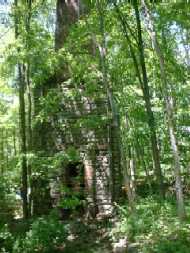
Jenny Jump State Forest provides opportunities for a variety of backwoods oriented recreation in rural but growing Warren County. The ridge-top forest, which spans six municipalities, is a popular area for camping, hiking, hunting, and cross-country skiing. Green Acres proposes to acquire additional land to create a linkage between publicly owned portions of the forest.
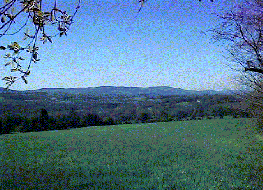
In keeping with the “string of pearls” concept associated with greenways, Green Acres, the DEP’s divisions of Parks and Forestry and Fish and Wildlife, and the counties of Hunterdon, Morris, Sussex, and Warren have identified a number of sites along the Musconetcong River and Pohatcong Creek for acquisition. This project is a cooperative effort between Green Acres, the Department of Agriculture’s Farmland Preservation Program, and the Musconetcong Watershed Association. Although this is one of the state’s most important trout waters, fishing access is currently limited. Preserving the water quality in the Musconetcong is a major goal of the project.
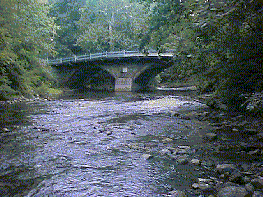
New Jersey’s natural areas often protect threatened or endangered animals and plants species. Green Acres is committed to protecting these environmentally sensitive regions of New Jersey. Green Acres plans to expand dozens of Natural Areas throughout the state, ranging geographically from Woodbine Bogs in Cape May County, to Strawberry Hill in Mercer County, to Ramapo Lake.
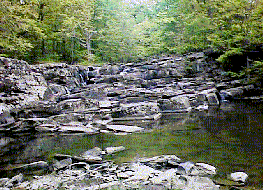
Parvin State Park contains more than 1,100 acres, including 500 acres designated as a Natural Area. Parvin offers recreational opportunities such as camping and hiking, as well as swimming, boating, and fishing at Parvin Lake. Green Acres has identified additional land which should be acquired to further protect the watershed of Parvin Lake and the region.

Green Acres has targeted the Paulins Kill as an excellent resource for open space and recreational opportunities. The State is committed to providing access to the river as well as preserving farmland in the Paulins Kill corridor to form an integrated open space system. To that end, Green Acres is working with the county agricultural development boards where there are opportunities to protect properties that meet common open space and farmland preservation goals, such as the Paulins Kill Greenway. The Ridge and Valley Conservancy, a local nonprofit land trust, is also participating as a partner with the state and county governments to share in land acquisition costs. Much of the Paulins Kill Valley Trail corridor follows the Paulins Kill and provides for excellent hiking and fishing along with a variety of other outdoor recreational opportunities. Green Acres will acquire additional land to expand the greenway and provide better access to the Paulins Kill Valley Trail.
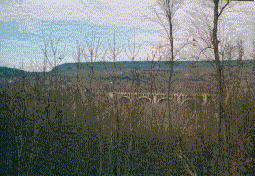
The Pequest Trout Hatchery relies heavily on the high quality of its underground water supply for successful fish production. The fish raised at the hatchery are used to stock many of New Jersey’s streams and ponds. Green Acres proposes to acquire land to expand the Pequest Wildlife Management Area and to preserve land along the river in Sussex and Warren Counties. The primary objective of these acquisitions is preserving the aquifer recharge areas designated as critical to the protection of the hatchery’s underground water supply. The project will further protect the habitat of a variety of wildlife species including the endangered bog turtle. These additions will offer excellent outdoor recreational potential, particularly for fishing, hunting, and hiking.
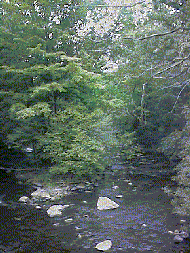
The only nationally designated reserve of its kind in the country, the Pinelands are home to plant and animal species found nowhere else in the world. Its sandy soils filter billions of gallons of annual rainfall into New Jersey’s largest drinking water aquifer. Comprising one million acres, the majority of which are privately held, the Pinelands continue to offer important opportunities for land and resource preservation. Permanent protection of open spaces in the Pinelands will ensure excellent water quality, ecosystem integrity, sustainable agricultural production, and the continuance of resource-based recreation such as canoeing, hunting, and camping.
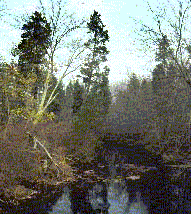
Portions of Hunterdon, Morris and Somerset counties are located within the Raritan basin watershed, a suburban area of the state that is faced with increasing residential development pressure. Green Acres will pursue land preservation efforts in the Raritan River watershed to protect areas of natural diversity and historic resource value, including the Sourlands Mountains, the largest contiguous wooded area in central New Jersey. Other parcels of open space also will be preserved, creating a greenway network connecting existing and future public open space and recreation areas throughout central New Jersey.
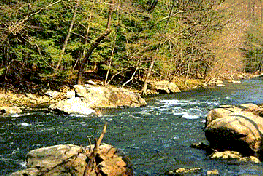
The intrinsic value of New Jersey’s stream valleys are today widely recognized. Stream valleys provide recreation opportunities, protect potable water supplies, produce and nurture wildlife, and serve as natural corridors. Stream valleys are often the last remaining vestiges of the natural landscape and, as such, can often be incorporated as linkages into an open space system. Green Acres will focus land acquisition efforts in some of the increasingly developed areas of Monmouth County. Land will be acquired that will protect the water quality of the Swimming River watershed, preserve significant natural ecosystems, and benefit the state’s Swimming River Natural Area.
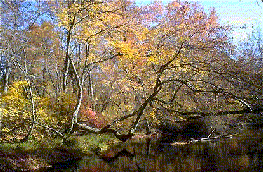
New Jersey has long recognized the importance of protecting headwater areas and the sensitive resources of rivers, streams, lakes, reservoirs, wetlands, and associated buffers and coastal waters. These lands protect ecological resources and water quality, provide water-based recreation opportunities, and serve as linear open space linkages. Aquifer recharge areas and lands held by water utilities for protection of water supplies must be preserved, as well as sensitive areas beyond those holdings. The cost of not doing so is far greater than the cost of preservation. Therefore, Green Acres will continue to acquire land that will serve to protect critical water supplies, support wildlife habitat, and provide recreational opportunities throughout New Jersey.
